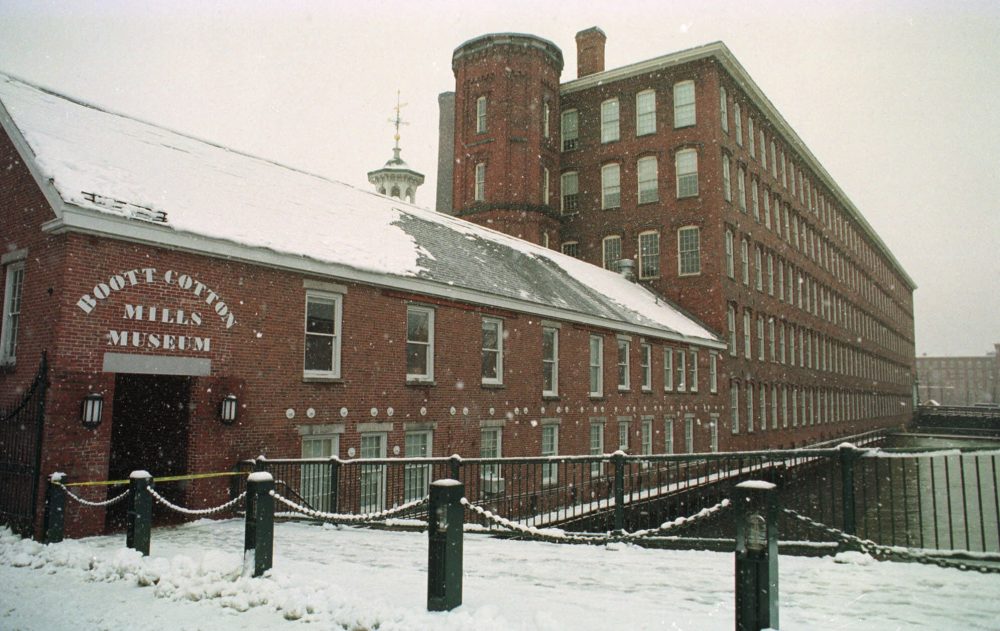Advertisement
commentary
Brave Hearts: When Lowell Was A Sanctuary City — For Fugitive Slaves

President Trump's executive order on immigration enforcement turned a campaign promise into policy. Its provision to curtail federal funds from so-called "sanctuary cities," or municipalities that refuse to hand over undocumented immigrants for deportation, prompted lawsuits from two local cities with large Latino populations, Lawrence and Chelsea.
Another city with a large immigrant population, Lowell, declined sanctuary city status. If past can serve as prologue, a glimpse into the mill city's abolitionist history may prove instructive.
The 1793 Fugitive Slave Act required the return to the South of any fugitives from slavery. Some jurisdictions in northern states circumvented the law, however, by mandating jury trials before alleged fugitives could be moved. Others forbade the use of local jails and any assistance from state officials in returning slaves.
Just as the president's call for mass deportations places the issue of immigration and sanctuary before all of us, the 1850 [Fugitive Slave Law] placed slavery -- and complicity in its existence -- before the public.
How does this history connect to Lowell, the 19th century cotton mill city on the Merrimack River? Without cotton from the slave-holding South, simply put, there'd have been no Lowell mills. It was there that abolitionist resistance took root among another group of exploited and disenfranchised Americans: women.
In 1834, as reported in the January 3, 1835 edition of William Lloyd Garrison's anti-slavery newspaper The Liberator, women mill workers joined forces with others to form the Lowell Female Anti-Slavery Society. An 1835 national petition demanding an end to slavery in the nation's capital had thousand of signatures, and 1,634 came from Lowell, according to the March 14, 1835 edition of The Liberator.
The city's anti-slavery advocates counseled people to disobey the new law, and its churches offered sanctuary. Sarah Bagley, a mill worker, labor activist and writer, edited a column in the Lowell Female Labor Reform Association's own paper, The Voice of Industry. In 1846, she became the paper's editor, standing behind its pledge to fight for "the abolition of Mental, Moral and Physical Servitude, in all their complicated forms." Bagley would remain active in the city’s anti-slavery movement until Emancipation, several years later.
Advertisement
In 1850, southerners in Congress pushed through the Fugitive Slave Law, which made public officials subject to a $1,000 fine, equal to approximately $30,000 in present-day value, for failure to arrest alleged runaways. Private citizens who aided a fugitive faced imprisonment of up to six months. Neither judge nor jury determined the detainees' fates; the decision rested with a special commissioner who was paid $10 for returning the men and women to bondage, and only $5 for setting them free.
Just as the president's call for mass deportations places the issue of immigration and sanctuary before all of us, the 1850 law placed slavery — and complicity in its existence — before the public.
After the law's passage, some two dozen fugitives fled the city for Canada. The Lowell Advertiser covered an October 1850 meeting about the exodus and highlighted the participation of one attendee in particular, Chauncey Knapp, an abolitionist and the editor of The Middlesex Standard:
"The meeting at the City Hall last evening was well attended... Chauncey Knapp made a motion to the effect that all people who had left the city from fear of being captured, should be telegraphed home, and the people of Lowell would see to it that they be protected. He expressed himself willing to suffer death rather than let a fugitive slave be caught when it was within his power to prevent it. The motion was unanimously accepted." Pledges to defy the federal government rang out."
No complicity with slavery! became a rallying cry, the paper reported.
Nathaniel Booth evidently heard it. Booth was only 17 when he escaped bondage in Virginia in 1843. He opened a barbershop in Lowell the following year but sought refuge in Canada in 1850. With Knapp and the city's assurances of his and other fugitives' safety, Booth came back to Lowell. His return was news.
The December 19, 1850 edition of the American Citizen newspaper reported that Booth was "... engaged at Mr. Barth's Barber's Shop ... We trust the spirit of the people has been sufficiently manifested, that it will be entirely safe for him and all other men who have been merely guilty of stealing themselves, to remain just where their business calls them." (Barbershops were, by then, long-established gathering places for those seeking to support the Underground Railroad, fundraise, and buy abolitionist newspapers.)
In the spring of 1851, slave catchers entered Lowell and demanded Booth's return to his slave holders. They did not prevail. The city's denizens remained true to their pledges to defy the federal government and surrender no one. As reported in the Weekly Journal and Courier for April 7, 1851, residents raised $700 to pay off the slave catchers, and Booth remained in Lowell until the late 1850s, when he moved to Boston.
Lowell stood strong at a time of great national upheaval. How its people resisted is instructive as Americans consider whether to turn on or offer sanctuary to our immigrant neighbors in 2017.
In 1855, in defiance of an updated federal Fugitive Slave Act that heavily favored slave holders, the Massachusetts state Legislature passed the Personal Liberty Act that guaranteed runaways various protections, including the right to a jury trial. The Act also made it difficult — and costly — for slave owners to prove their case in court. The slave-owning South was incensed.
As tensions between the North and the South intensified, Lowell's religious institutions and citizenry continued to provide sanctuary to their vulnerable neighbors. Anti-slavery societies stood at the ready to combat efforts to return any of Lowell's citizens to a life of captivity. Nobody was snatched.
Lowell stood strong at a time of great national upheaval. How its people resisted is instructive as Americans consider whether to turn on or offer sanctuary to our immigrant neighbors in 2017.
Author's note: Research assistance for this op-ed was provided by Emily Yunes, a history major at UMass Lowell.
